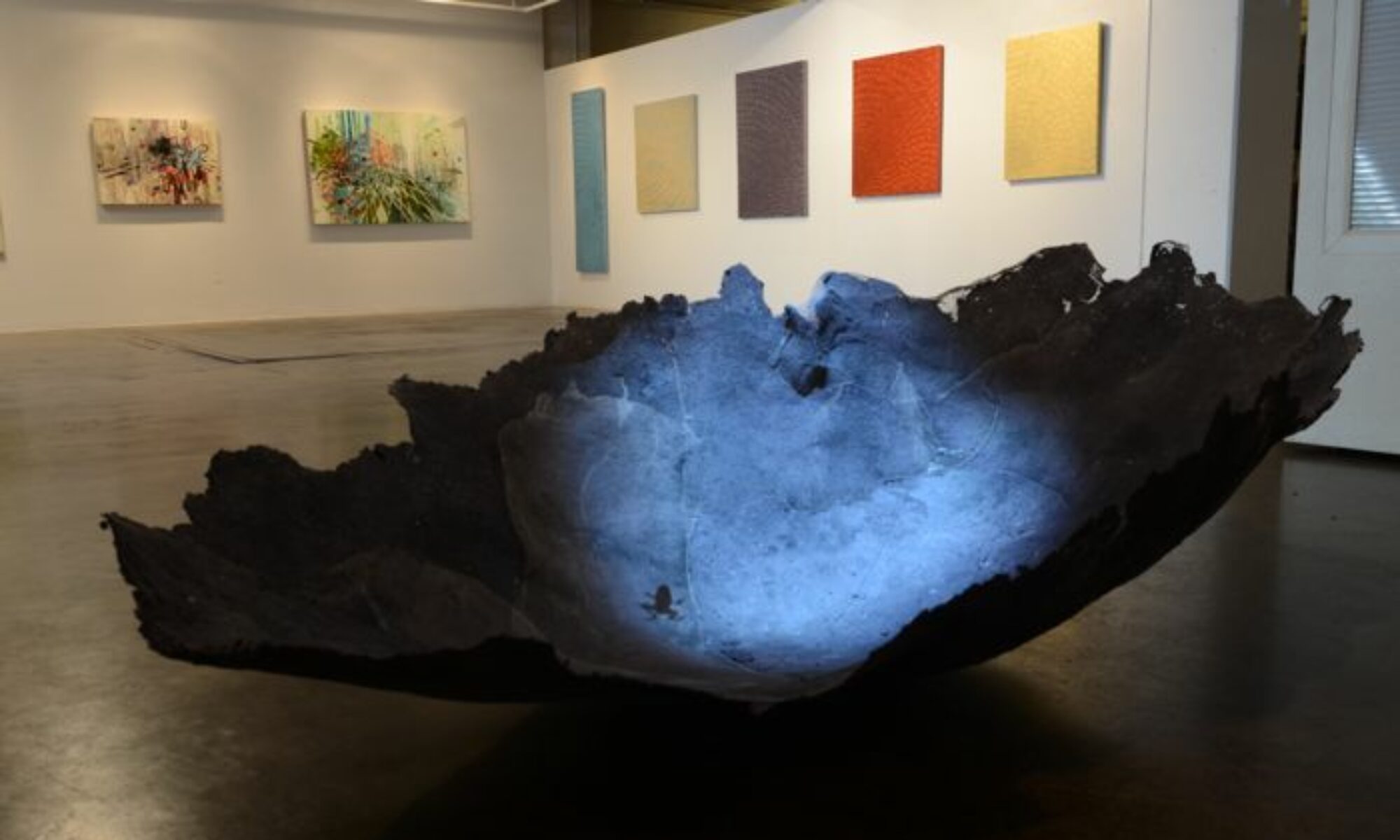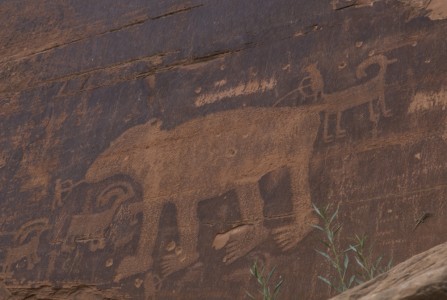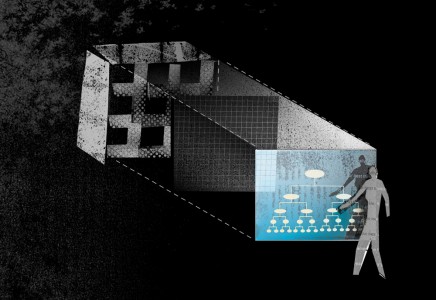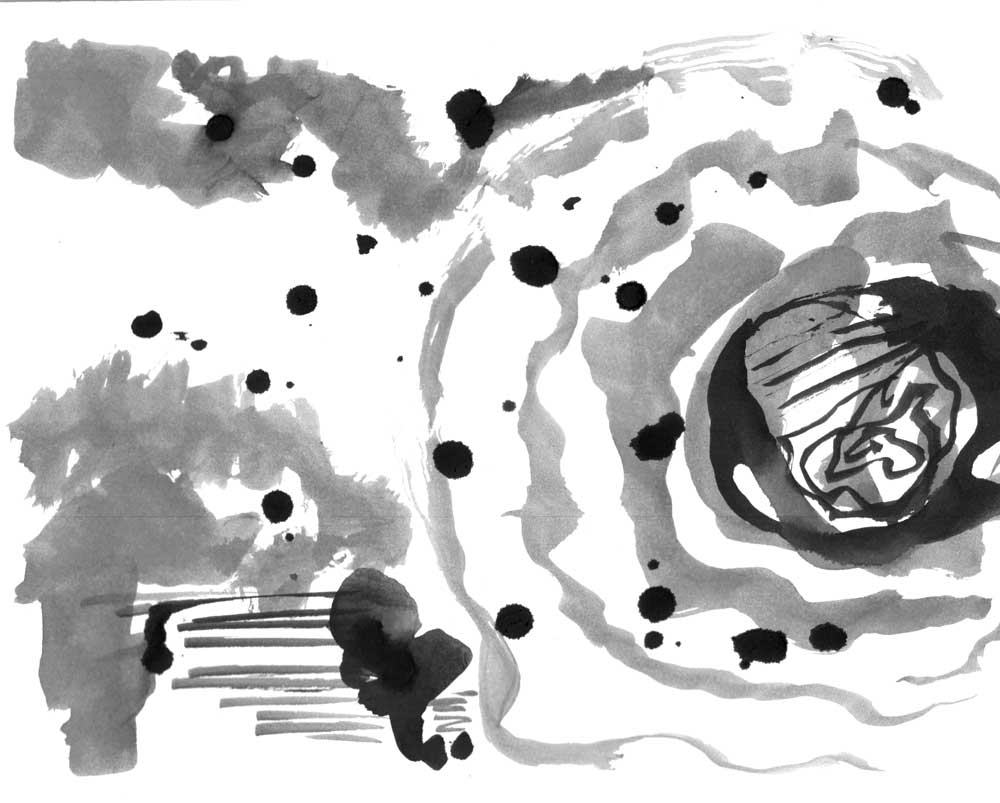Petroglyphs are pictograms drawn by ancient cultures on the surface of rocks by incising, picking, carving, and abrading. Drawing is about mark making. Right now, I am looking at a rock that is on my shelf. It has particular marks incised on it. They were most likely created by natural causes-rubbing against another rock. Images, drawings and marks can become a part of a visual language for a designer. Particular types of images and marks become “personal petroglyphs” for me. The composition and spaces between the marks is what I find inspiring. Some of my personal petroglyphs are natural things like rocks, that I have traced or drawn. But others are cultural images found in media. I have a visual language book of images that I collect. Another box contains ephemera-printed material from the past. Petroglyphs can become constraints in a design process and relate specifically to a place. I like to hike and look for petroglyphs. This one was found along the highway somewhere near Moab.
fitness in design

In design, it is important to identify what determines fitness. In other words, how well does a project fit to the designer? Designers can be natural problem solvers within a particular project but how good are we at attracting the right mix of projects that reinforces our vision as the designer that we want to be? The difficulty lies with the skills that are associated with designers. Often there is more work out there than we have time to do. We can do many things, and well. So it is important to steer the boat to the right cove. It might require tacking against the current to find the right place. If we know ourselves, and communicate who we are or who we aspire to be to the right audience, then projects will be the right fit. Fashion and design is only in part about style it is about wearing something well. It is about fit. Even the fortune cookie agrees.
“Finding” Design Value in Social Media
Social media sites that track the innovations in technology and practices are a fast-growing network. These sites can be described as ‘finders’ which can also describe the people hired to gather the actual content. They search intensely for inspiration by lurking around creative websites. Creatives are asked sign up and be a part of the design community. In exchange, designers gain connection to the never ending stream of inspirational images. Design creatives might not think about it but these sites watch and lurk. They harvest from the creatives they serve. I am torn about the value of these sites. Recently, I unliked one because an obscure image that I posted showed up for visual consumption on a design website that was my friend. Social media sites inform, connect but unless we are careful in our design processes, social media can play a role in the disservice of design thinking.
As I write this, I am thinking about how to responsibly use media technology in landscape architecture. The appropriateness is a big question in my mind. This morning, one of these websites inspired me to think about material possibilities in a different way. It triggered new thought and possibilites for a project. Searching for moisture sensitive light panels revealed the intense interest cultivated in the last 24 hours among the design harvesting websites. It is everywhere.
I might “like” the various design sites again, or not. I am not sure. In the future, I might think twice before posting a photo, link or something that might be better shared with design friends over drinks. To be aware is more important than to be guarded in design. Being overly guarded closes the door to the potentials of an interesting conversation.
Tracking Loyalty
How do we track loyalty in our design selves? This morning, I woke up with the sun and headed to the grocery store. My local grocery store has responded to customers comments with a store re-design and fresher produce. Improved products are displayed in a warmer environment. The customer relationship has changed. People in the store are friendlier and seem more relaxed. This store went from an unpleasant experience to one that I actually enjoy. For a long time, I paid no attention to the reward system. It consisted of encouraging me to buy things that I cared little about. But today, I was rewarded with a free in-store gourmet coffee coupon. The store is tracking my loyalty. I have been tagged by an analyst to find out if this reward will influence my shopping pattern.
How can we track our loyalties in design? What systems and rewards can we set up in our practices that bring us back to our goals, objectives and design selves? This is a conversation that I am having with myself today.
Judging the Sunset
Every night in the summer, I try to make time to watch the sunset. The Colorado sky is the perfect venue for seeing dramatic views of color, shape and form. Its ever-changing display eventually reveals a purity of color made possible by the lack of humidity. Juxtaposed against the subtle pinks and grays I see cobalt blues, red and amber oranges dancing in a dramatic display. On the east coast, the sky filled with humidity, has more grays. Viewing the landscape there is like looking through layers of transparent silk. The veils of silk visually knock back elements of the landscape, giving clues to how far away I am from my subject. In Colorado, as the sun sets low in the sky, the conversation ultimately goes to the evaluation of the sunset. I am troubled by the idea of rating a sunset. How can we decide upon the metric? How can something so spectacular be measured? And by what standard? To do this destroys the view. How can we put a number and value on nature? I have decided instead to find qualitative comparisons to the sunset. Right now, I am observing the relationship between what I see, and the qualities observed by landscape painters in history. Is this what Claude Lorrain would have seen in France in the mid 1600’s?
Aesthetic Ghosts
“Every man need aesthetic ghosts in order to live,” Yves Saint Laurent at his retirement in 2002.
japanese fences
I need to invent a waterproof sketchbook. Recently while soaking in a Japanese hot tub, I contemplated the surrounding fence. It was a collage of at least ten japanese fence constructions. I felt the need to sketch and draw in the water. I noticed the proportions and how joints fit together in this fence. It is tempting to recreate designs. We see them here and want to put them there. My mind wandered. I have been warned about that but I can’t help it. If the mind wanders, let it do what it wants. What if the techniques inspired other forms of design? I went home and pulled out a sketchbook that I took with me to Japan years earlier. I remembered a quick color sketch that I did as I walked through Kyoto. The photos from this trip are archived on my computer somewhere and the sketch is bound with the book, sitting on my shelf. Sketches and field notes are artifacts that float in the creative well, and easily accessed. Perhaps one day, this fence idea will become scalable and will inspire something unrelated to a fence.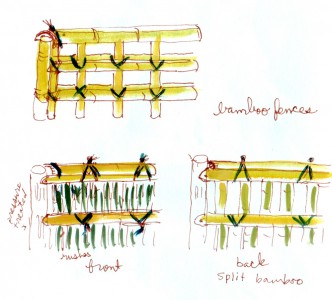
Design Curation Environment
Gallery and museum directors were once the only curators. The idea of curation is changing and becoming public. Curation is no longer associated with a special person who carefully chooses art for galleries and museums. The word has become diluted and accessible to the public. Curation has come to include anyone who chooses images and then shows them to others. In design, the constraints designers choose, and then how we respond is the definition of design. “What is not there” is as powerful as “what is there.”
How I dress is an act of curation. What I choose to be in my house is an act of curation. These choices are a reflection of what I value. Social media has forced us into being sorters of content and to think about curation. We decide what photos to upload and then if we choose to look, we are forced to see what others choose. Companies now hire visual image collectors to find and comment on utopian images. They are repackaged to a community or market; a collective design consciousness. Streaming across my phone, I have seen that image just hours before. The images are perfect; where is the process associated with the design? I am not suggesting that designers walk around with blinders on or turn off the media to lock themselves in a library with a few select books. Although after looking at these words, this notion sounds rather wonderful. Maybe I could do this for a week or two. But in a matter of time, I would become antsy and look for a plug to reconnect and be a part of my culture again.
Designers must be must be careful to curate how images and content infiltrate their own design process environment. There are at least three important things to consider with design curation. They are inter-related but have distinct meaning.
1. constraints-This involves deciding upon a few concise, elegant selection of ideas that doesn’t include everything in the kitchen sink.
2. editing- This is an active, yet flexible pursuit that continually defines, clarifies and removes content.
3. discipline-Against the flexibility of editing there must be a honing of vision, a stick-to-it-ness that creates meaning and identity.
In the age of social media, designers must take the opportunity to think about constraints, editing and discipline. In a sense, the designer is a fish, hovering between a few rocks, watching images and content float by. These rocks break the water and define the place in which the fish lives so others can know where he is situated. The fish is hovering between several stabilizing forces for a period of time. Some of the content floating past relates to the rocks. If the fish darts about between rocks, he is no longer situated in a place and his identity loses meaning. It takes discipline to pick a few rocks to hover against, turning at times against the forces to have authority over the place.
Hyphenated-Design Experience
The idea of hyphenates is intriguing to me. Today, I was researching water catchment solutions for a Tucson garden and reading a food and wine article. Perhaps I was hungry; my mind wandered between design, landscape and food. When things overlap, there is change, and the resulting conditions create opportunities for design thinking. People are rarely one thing. Myself: illustrator-landscape architect, a title that I can easily hyphenate again and again. In my thesis, I researched theories from many fields and found interest in the space occupied by the hyphen itself. Even the ancient Incan technique referred to in Food and Wine Magazine article is a design idea with physical edges, terraces made to maximize water resources. Opportunities for design happens between at least two things.
http://www.foodandwine.com/articles/hollywood-canning-party-preservation-instinct
Project for the Arkansas River
According to the BLM website, the Final Environmental Impact Statement (EIS) for is now scheduled to be released sometime in mid to late April. This is a major milestone in the permitting process that will help to determine how the project moves forward.
The BLM is considering various alternatives for Over The River. In the Final EIS, the BLM will recommend a “Preferred Alternative” for the project (the alternative that the BLM recommends for realization).
The artists have proposed 5.9 miles of fabric panels located in 8 different locations along a 42-mile stretch of the Arkansas River. The BLM’s different alternatives could call for changing a variety of factors, such as the length of the project, the timing and length of the exhibition period and the duration of construction.
These alternatives are all compared against a “No Action” alternative — the baseline alternative that describes what would happen if the project is not completed. We will not know which alternative has been selected until the public release of the Final EIS.
Following the release of the Final EIS, the BLM will provide a public review period before issuing a Record of Decision. The Record of Decision is the final action in the BLM permitting process, and it is currently scheduled to be issued in early summer of this year. If all goes as planned, Over The River construction could begin as soon as spring of next year with the two-week exhibition taking place in summer 2014.
